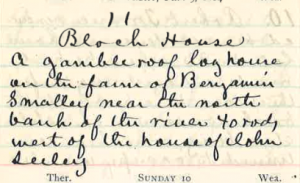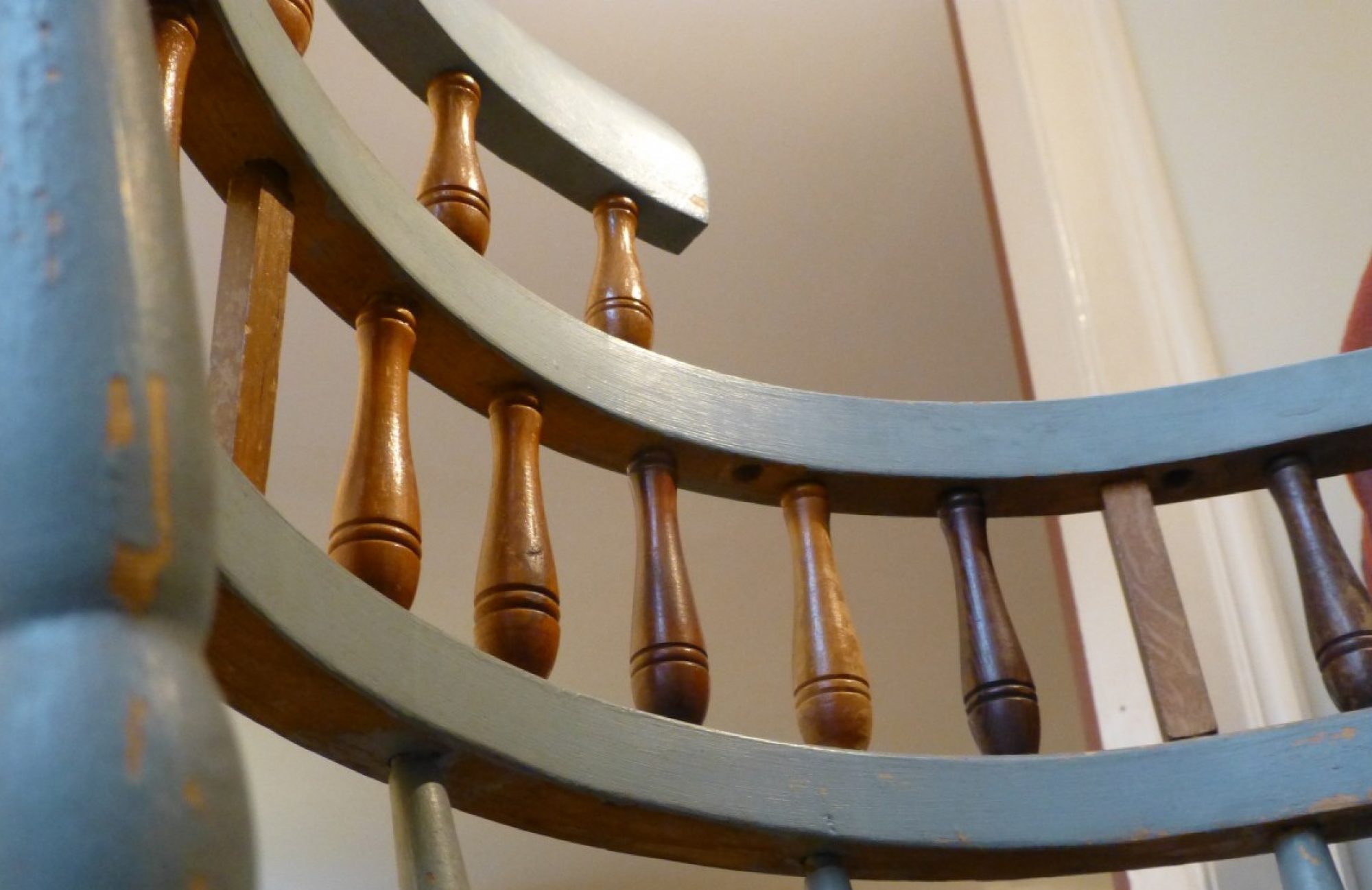In his acquisitions ledger, Sheldon recorded receiving several artifacts from J.R. New of Middlebury on September 13, 1884, most of which came from the “block house,” built 1782.

In addition to these objects, the ledger also indicates that Sheldon also acquired a fragment of wood from Holland Weeks’s homestead on the same day. Sheldon’s diary entry for September 13, 1884 indicates that he traveled to Salisbury, Vermont (about ten miles south of Middlebury), where he collected “some old books and relics.”
In the log book of woods used in the relic chair, Sheldon provides only slightly more information: “11. Block House: A gamble roof log house on the farm of Benjamin Smalley near the north bank of the river 40 rods west of the house of John Seeley.”

According to H.P. Smith’s History of Addison County, Smalley was “the first immigrant who brought his family” to settle with him in Middlebury, arriving, like many of the other settlers, from Salisbury, Connecticut (Smith, 244).
In traditional usage, a “Block House” indicates a fortification, a structure intended for military use. It’s possible Sheldon was using the term with its vernacular meaning of simple, square construction; he also likely meant to note a not a “gamble roof” but rather a “gambrel roof,” a symmetrical roofline with two different slopes, often seen on barns. More research is needed to determine the significance of this structure, the identity of “J.R. New,” and other mysteries of Sheldon’s selection.
